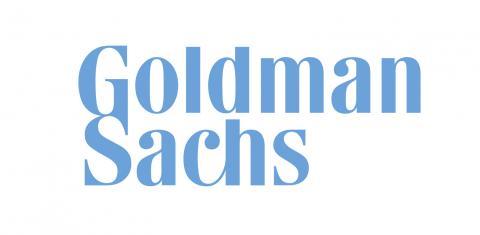Content

This put downward pressure on the euro as investors feared a revival of the Greek debt crisis. Since the euro’s launch on January 1, 1999, it has spent less than two years valued at less than a dollar. The euro peaked on April 22, 2008, with an exchange rate of $1.60. High euro-to-dollar exchange rates mean that your dollar could purchase more in the European Union, while a low rate means you would purchase less there. Except for Germany, the plan for introduction of the new currency was basically the same.
They were set so that one European Currency Unit (ECU) would equal one euro. The European Currency Unit was an accounting unit used by the EU, based on the currencies of the member states; it was not a currency in its own right. They could not be set earlier, because the ECU depended on the closing exchange rate of the non-euro currencies (principally sterling) that day.
Against other major currencies
Banks would accept the exchange of legacy currencies, begin to dispense euros from ATMs, and only euros would be available as withdrawals were made, starting on 1 January. Merchants would accept legacy currency, but give change only in euros. In Germany, the Deutsche Mark would no longer be a legal tender on 1 January, but would have to be exchanged at the banks. As soon as the U.S. debt crisis was somewhat resolved, investors then fled the euro in response to a flare-up of the Greece debt crisis. This crisis created doubts over the EU’s financial strength and the future viability of the euro itself. It rose for a brief time as EU leaders met to resolve what had then become the eurozone crisis.

All nations that have joined the EU since 1993 have pledged to adopt the euro in due course. The Maastricht Treaty was later amended by the Treaty of Nice,[18] which closed the gaps and loopholes in the Maastricht and Rome Treaties. The designs for the new coins and notes were announced between 1996 and 1998, and production began at the various mints and printers on 11 May 1998.[21] The task was large, and would require the full three-and-a-half-years.
Notes & Data Providers
Euro coins from any member state may be freely used in any nation that has adopted the euro. Retailers and government agencies had a considerable task as well. For items to be sold to the public, dual pricing was commonly utilised.
Moreover, the EUR to US dollar rate may reflect the overall global market sentiment. The European Union (EU) is a political union of 27 countries that agree to abide by certain rules and use the euro as currency. As with nearly all currencies, the euro is able to be converted to other currencies based upon the value of each currency being considered. Since the Euro is a major currency, traded on the foreign exchange (forex) market, it is not pegged to the U.S. dollar; this creates value fluctuations relative to the economic circumstances in the EU and U.S. All new EU members having joined the bloc after the signing of the Maastricht Treaty in 1992, are obliged to adopt the euro under the terms of their accession treaties.
EUR to USD Historical Chart
It was widely expected that there would be massive problems on and after 1 January. Such a changeover, across twelve populous countries, had never been attempted before. Euros are worth more than dollars, and they have been since 2002.
- Data are provided ‘as is’ for informational purposes only and are not intended for trading purposes.
- When ECB Chair Mario Draghi announced that he would begin quantitative easing, the euro immediately dropped by 1% to $1.30.
- Banks would accept the exchange of legacy currencies, begin to dispense euros from ATMs, and only euros would be available as withdrawals were made, starting on 1 January.
- Too many factors may affect the rate of the currency pair, and it’s best to be up-to-date with what’s happening in the global arena in order to make realistic and reliable predictions.
- The ESM required a treaty amendment to allow it and a separate treaty to establish it but, if ratified successfully, would be established in time to take over when the old facilities expire in 2013.
- As the chart shows, the indicator has been in a hidden bullish divergence towards price in recent months.
The European Fiscal Union is a proposal for a treaty about fiscal integration described in a decision adopted on 9 December 2011 by the European Council. The participants are the eurozone member states and all other EU members without the United Kingdom and the Czech Republic. The treaty entered into force on 1 January 2013 for the 16 states which completed ratification prior of this date[55] and on 1 April 2014 entered into force for all 25 signatories. Starting on 1 December 2001, coins and notes were distributed from secure storage, first to large retailers, and then to smaller ones.
In times of economic uncertainty, many investors hold dollars because they believe the currency and the assets denominated in them are safer to hold in a crisis. As more investors convert other currencies or assets into dollars and raise the overall demand for the currency, its value is rising. If you do decide that trading this currency pair is something for you, and you believe in the future of the Euro vs. US Dollar pair, first, you need to decide on a suitable trading method for you and work it out first on a demo account, and then on a real account. LiteFinance has fact-checked information and a user-friendly platform with an outlook for novices as well as experienced traders and investors. Nevertheless, the source doesn’t give chances to the pair again. By the end of the year, the euro will trade below $1 against the US dollar.
Xe Currency Data API
Due to differences in national conventions for rounding and significant digits, all conversion between the national currencies had to be carried out using the process of triangulation via the euro. The definitive values of one euro in terms of the exchange rates at which the currency entered the euro are shown on the right. The euro is managed and administered by the European Central Bank (ECB, Frankfurt am Main) and the Eurosystem, composed of the central banks of the eurozone countries. As an independent central bank, the ECB has sole authority to set monetary policy. The Eurosystem participates in the printing, minting and distribution of notes and coins in all member states, and the operation of the eurozone payment systems.
In late 2010/early 2011, it was agreed to replace the European Financial Stability Facility and European Financial Stability Mechanism with a larger and permanent European Stability Mechanism (ESM). The ESM required a treaty amendment to allow it and a separate treaty to establish it but, if ratified successfully, would be established in time to take over when the old facilities expire in 2013. Meanwhile, to support Italy and prevent it having to ask for a bail-out later, the ECB controversially started buying Italian bonds, as it had done with Greece. The ECB lowered its interest rate to 0.25% on November 7, 2013, in response to fears of deflation.
We partner with leading data providers to bring you the latest and most accurate prices for all major currencies, cryptocurrencies and precious metals. The currency, cryptocurrency and precious metals prices displayed on our site are aggregated from millions of data points and pass through proprietary algorithms in order to deliver timely and accurate prices to our users. Create a chart for any currency pair in the world to see their currency history. These currency charts use live mid-market rates, are easy to use, and are very reliable. So, if you look at the price chart, you will notice the price repeats its actions over the long term.
- The 1992 Maastricht Treaty obliges most EU member states to adopt the euro upon meeting certain monetary and budgetary convergence criteria, although not all participating states have done so.
- His report was published in October 1970 and recommended centralisation of the national macroeconomic policies entailing “the total and irreversible fixing of parity rates and the complete liberation of movements of capital”.
- Statements would bear balances in both currencies beginning no later than 1 July 2001, and earlier if required by the customer’s needs.
Slovenia, Malta and Cyprus all acceded within the first two years of the recession, closely followed by Slovakia in 2009. The three Baltic states of Estonia, Latvia and Lithuania joined in 2011, 2014 and 2015, https://g-markets.net/helpful-articles/trading-the-shooting-star-pattern/ respectively. The currency was formed virtually in 1999; notes and coins began to circulate in 2002. It rapidly took over from the former national currencies and slowly expanded behind the rest of the EU.
Other statistics on the topicThe Euro currency
Data may be intentionally delayed pursuant to supplier requirements. Although the uptrend will be replaced with a downtrend, the pair may hit the highs of 2011. PandaForecast.com predicts a solid uptrend that will lead the EUR/USD price to the highs of 2014. One source expects the pair to trade at the lows of 2002, while another one sees the pair at the highs of 2014. Given the EURUSD potential, expected highs, lows, and targets, it is possible to draw up a trading plan that will help you get profit with minimal risk. The symbol € is based on the Greek letter epsilon (Є), with the first letter in the word “Europe” and with 2 parallel lines signifying stability.
All of this leads to an estimate that capital flows towards emerging markets and currencies will continue to flow at the US dollar expense. Countries such as Indonesia and Mexico have aggressively lowered their interest rates, but interest rates in these countries are still considerably higher than in the United States. This chart shows the historical price of 1 Euro denominated in USD. For much of the past two decades, 1 Euro has always been worth more than 1 US dollar. However, in October 2022, the Euro/Dollar exchange rate briefly went below $1. The Euro is managed and administrated by the European Central Bank (ECB) in Frankfurt.